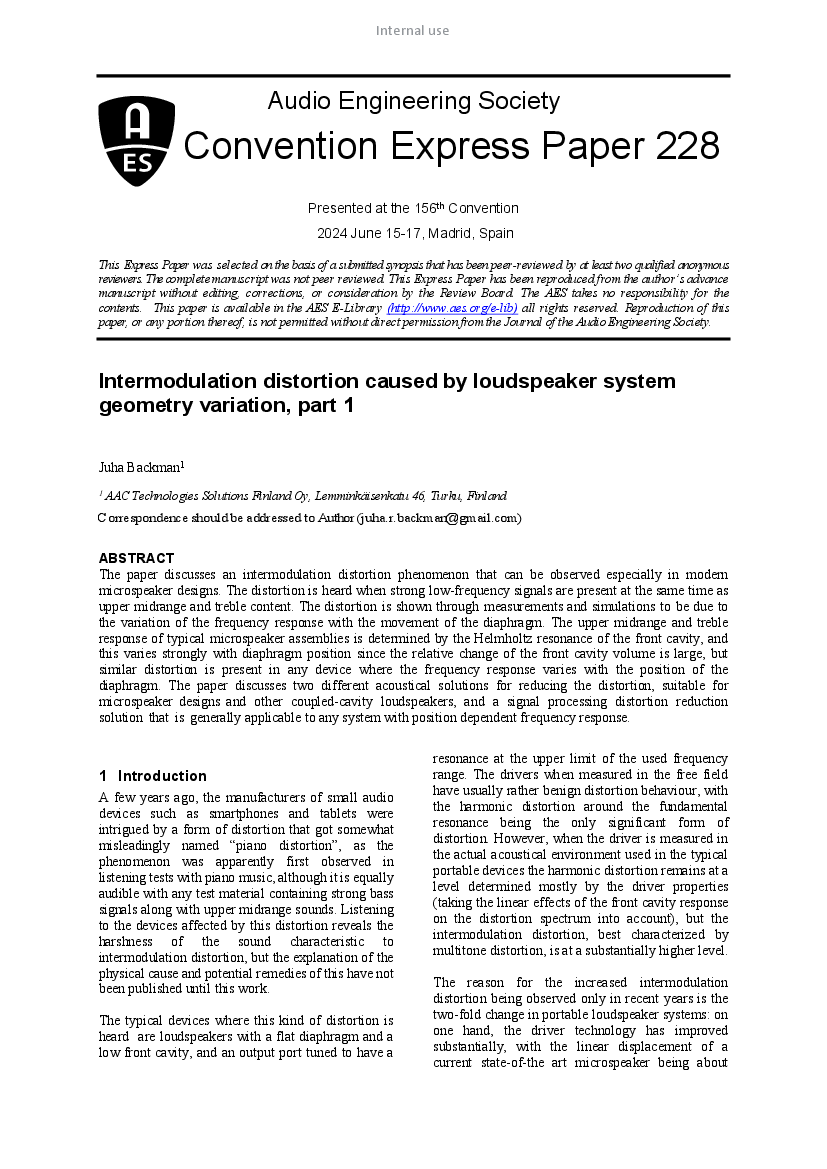Home / Publications / E-library page
You are currently logged in as an
Institutional Subscriber.
If you would like to logout,
please click on the button below.
Home / Publications / E-library page
Only AES members and Institutional Journal Subscribers can download
The paper discusses an intermodulation distortion phenomenon that can be observed especially in modern microspeaker designs. The distortion is heard when strong low-frequency signals are present at the same time as upper midrange and treble content. The distortion is shown through measurements and simulations to be due to the variation of the frequency response with the movement of the diaphragm. The upper midrange and treble response of typical microspeaker assemblies is determined by the Helmholtz resonance of the front cavity, and this varies strongly with diaphragm position since the relative change of the front cavity volume is large, but similar distortion is present in any device where the frequency response varies with the position of the diaphragm. The paper discusses two different acoustical solutions for reducing the distortion, suitable for microspeaker designs and other coupled-cavity loudspeakers, and a signal processing distortion reduction solution that is generally applicable to any system with position dependent frequency response.
Author (s): Backman, Juha
Affiliation:
AAC Technologies Solutions Finland Oy, Turku, Finland
(See document for exact affiliation information.)
AES Convention: 156
Paper Number:228
Publication Date:
2024-06-06
Import into BibTeX
Permalink: https://aes2.org/publications/elibrary-page/?id=22574
(1775KB)
Click to purchase paper as a non-member or login as an AES member. If your company or school subscribes to the E-Library then switch to the institutional version. If you are not an AES member Join the AES. If you need to check your member status, login to the Member Portal.

Backman, Juha; 2024; Intermodulation distortion caused by loudspeaker system geometry variation, part 1 [PDF]; AAC Technologies Solutions Finland Oy, Turku, Finland; Paper 228; Available from: https://aes2.org/publications/elibrary-page/?id=22574
Backman, Juha; Intermodulation distortion caused by loudspeaker system geometry variation, part 1 [PDF]; AAC Technologies Solutions Finland Oy, Turku, Finland; Paper 228; 2024 Available: https://aes2.org/publications/elibrary-page/?id=22574